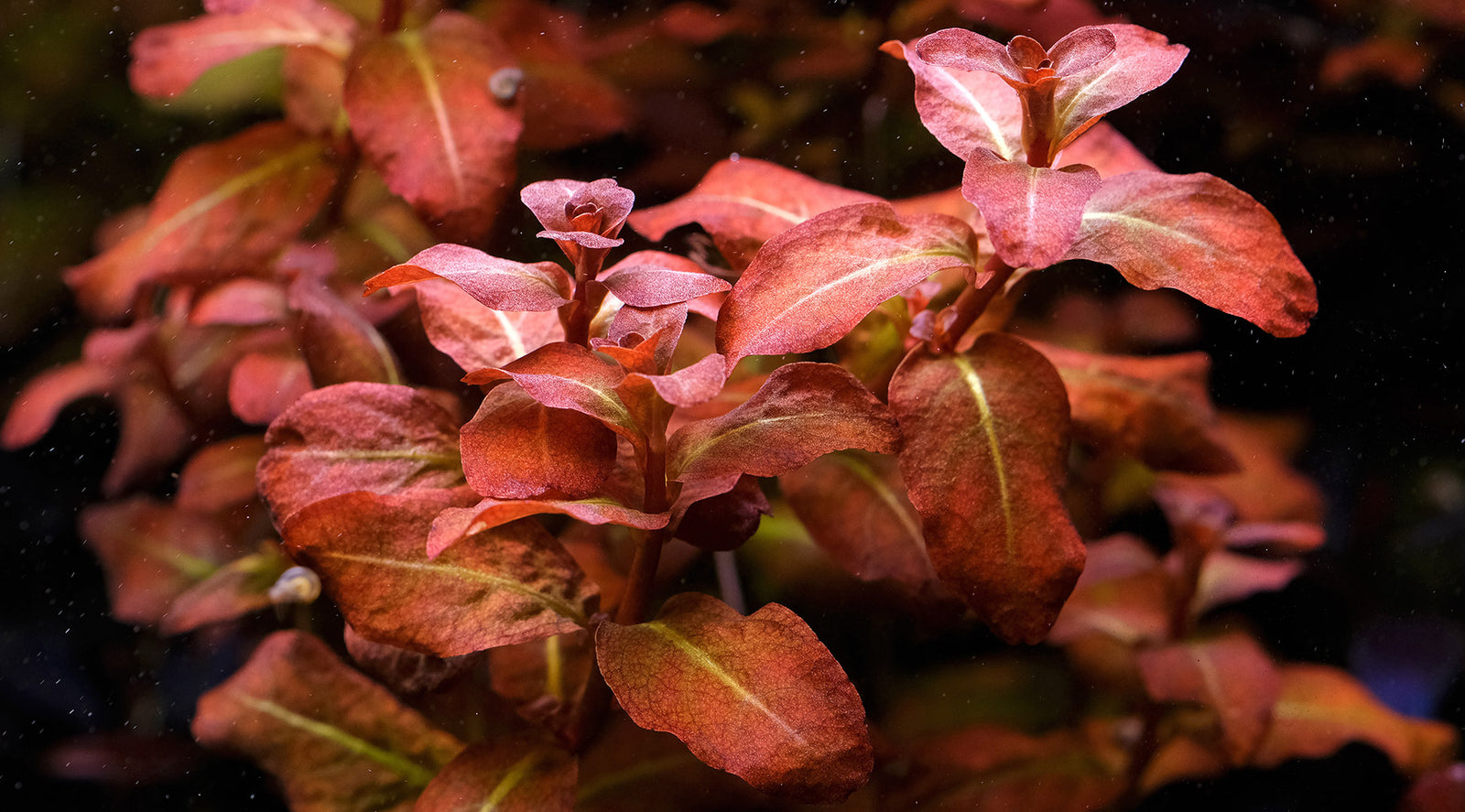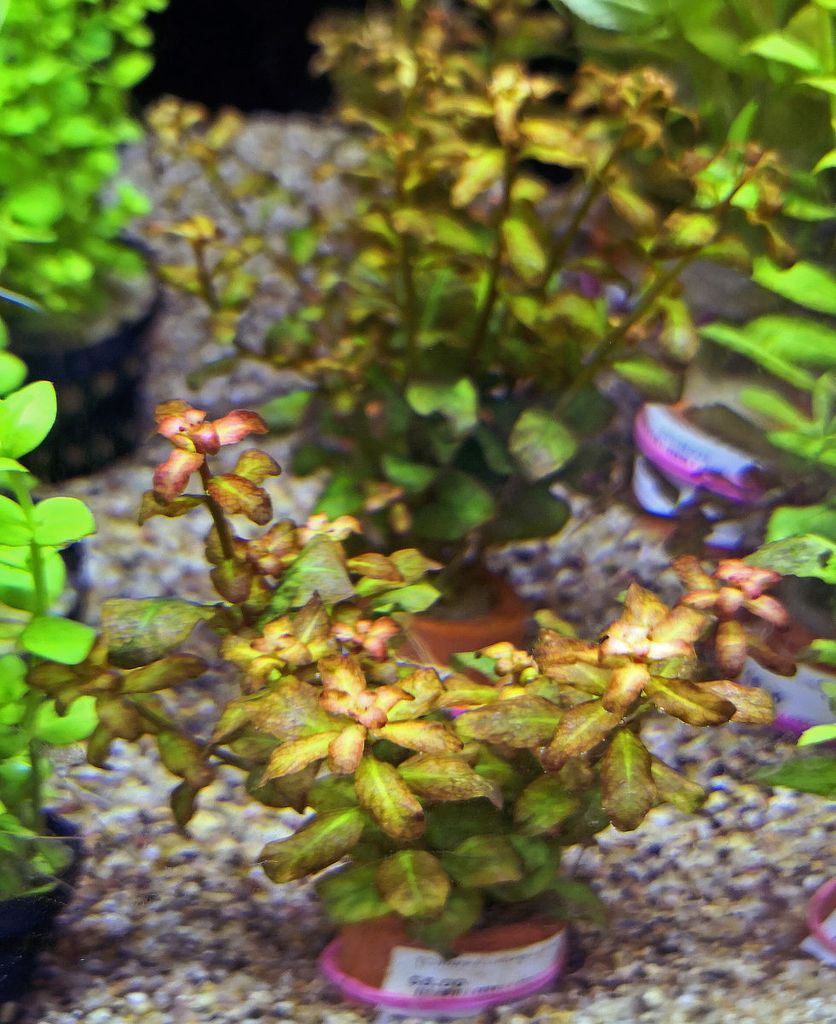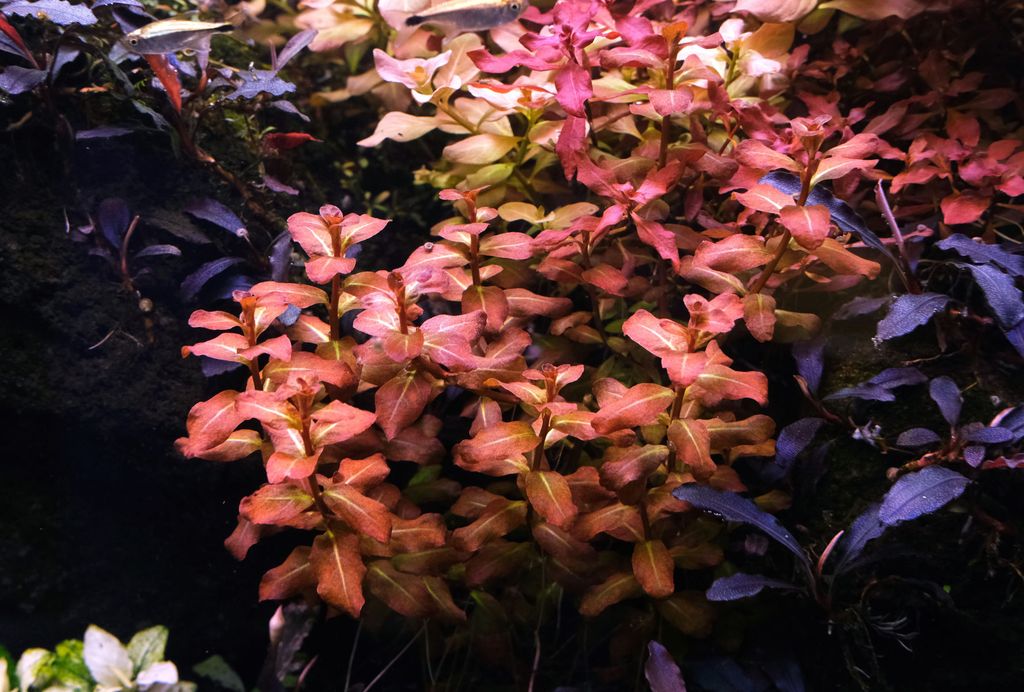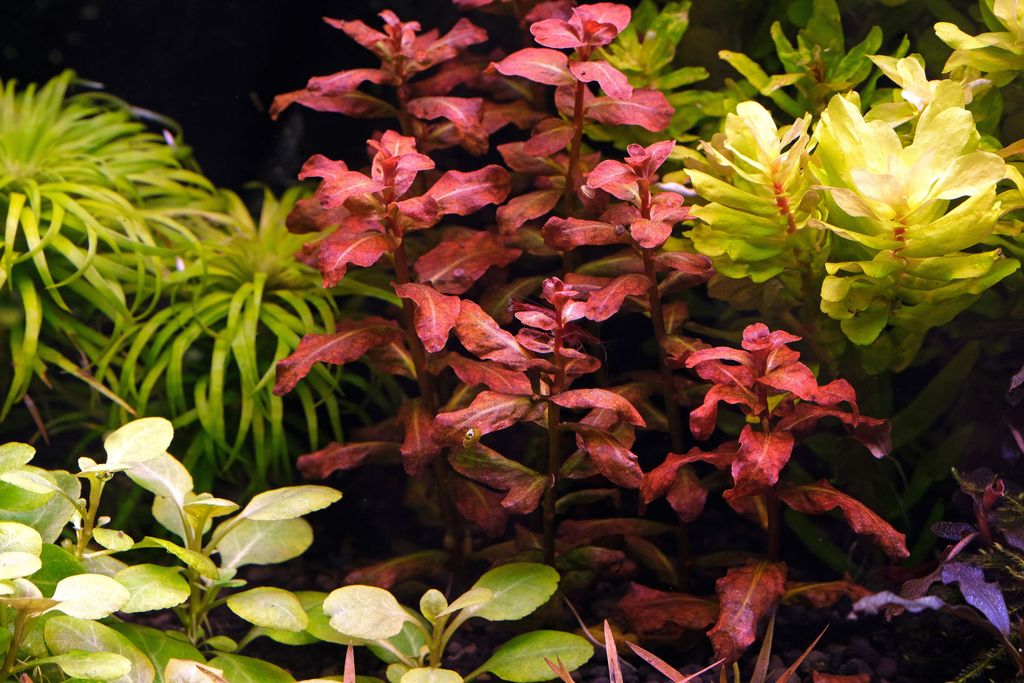
Ludwigia senegalensis comes from African where it is widespread. It first entered the hobby under the name Ludwigia ‘Guinea’, and has since become popular in the hobby due to its distinctive red leaves.
It is a small sized stem plant with reddish leaves that have a distinct red web pattern when grown in optimal conditions. Ludwigia senegalensis is most suitable for use in the mid-ground – it does not grow compact enough to be a good background plant while being a bit too tall for foreground usage.
Ludwigia senegalensis shows a range of growth forms depending on growth conditions in the tank. In poor lighting the leaves will grow more green with less even redness. In high lighting (with higher red spectrum) the red portion will cover the entire leaf surface except for a center line. In lean conditions the leaf sizes will be smaller with thinner stems. In richer conditions, the plant grows larger, fuller leaves. This size comparison is easily seen the leaf vs stem size – in lean conditions, the stems will look very thick compared to the leaves. This plant responds very well to substrate feeding – having ammonia in the rootzone is an easy way to grow fat leaves in this plant.
This plant is not super demanding with regards to CO2. It can grow very slowly in low tech tanks if the tank temperature is low (
Ludwigia senegalensis prefers slightly softer water but it is not a strict requirement for growing this plant.


Key success factors
- High light and adequate fertilization required to bring out strong coloration (higher red spectrum is helpful)
- Softer water is helpful, but not a necessity
- Stable CO2 levels – need not be high, but does best with some CO2 injection
- Nitrogen in ammonia format (best provided through substrate) gives fuller forms and broader leaves
Trimming and propagation
Trim top and replant as with any other regular stem plant. Bottom portions will sprout side shoots if healthy.
